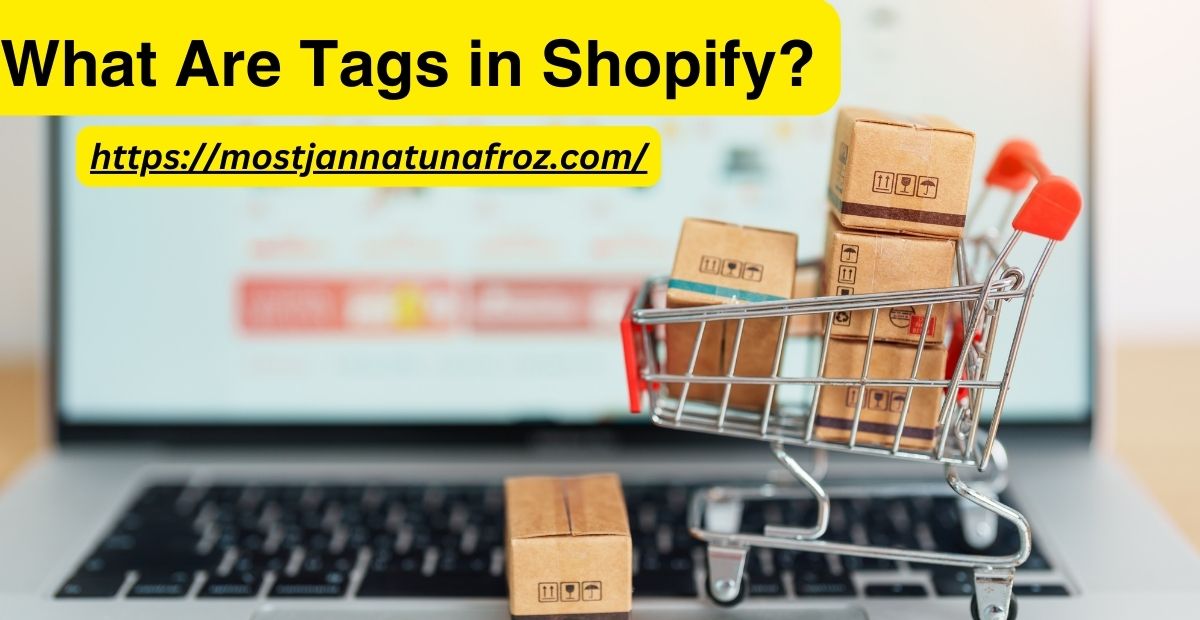If you searching for What Do Tags in Products Do in Shopify? In this article, I will help you to describe to you.
Shopify, a leading ecommerce platform, offers an array of tools for online retailers to optimize their stores and streamline operations. One of these essential tools is the use of tags in products. Tags might seem like a simple organizational feature, but they play a crucial role in how you manage, organize, and market your products. In this article, we’ll dive deep into what tags are in Shopify, how they work, and why they’re indispensable for ecommerce success.
What Are Tags in Shopify?

Tags in Shopify are keywords or labels that you assign to products, customers, or orders to organize and categorize them within your store. They act as identifiers that make it easier to group similar products or customers together. Tags are not visible to customers directly but serve as powerful internal markers that can influence everything from inventory management to how products are displayed on your online store.
How Do Tags Work in Shopify?
When you assign tags to your products, they become searchable and filterable attributes in your Shopify store. You can add tags manually when creating or editing a product, or they can be applied automatically through apps or bulk actions. Shopify allows you to add multiple tags to a single product, allowing you to label it in various ways.
Here’s an example: Imagine you run an online clothing store and want to categorize your t-shirts. You can use tags like “T-shirt,” “Men’s Clothing,” “Summer Collection,” and “Cotton.” By doing this, you make it easier to find and manage all your tshirts under these different categories.
Benefits of Using Tags in Shopify
Tags are not just for basic organization; they offer several benefits that enhance your store’s functionality and user experience. Here’s how:
- Improved Product Organization
Tags allow you to organize your products systematically. Instead of scrolling through endless lists of items, you can quickly filter products based on tags like “New Arrival,” “On Sale,” or “Popular.” This makes it easier to manage inventory, restock items, and update product details efficiently. - Enhanced Product Searchability
Tags are essential for search functionality within your Shopify store. When customers use the search bar, Shopify uses these tags to show the most relevant products. For example, if a customer searches for “leather boots,” all products tagged with “leather” and “boots” will appear in the search results. This can significantly improve the user experience and make it easier for customers to find what they want. - Efficient Inventory Management
With tags, you can manage inventory more effectively. Suppose you want to keep track of seasonal items or limited edition products. By tagging these products accordingly, you can monitor their stock levels and ensure they’re properly displayed or removed from the store as needed. Tags can also help you group products for bulk edits, making it quicker to update prices, add discounts, or change descriptions. - Creating Dynamic Collections
One of the most powerful uses of tags is creating dynamic collections. In Shopify, collections are groups of products that share similar characteristics. With tags, you can automate this process. For instance, you can set up a dynamic collection where all products tagged with “Summer Collection” automatically appear. This saves time and ensures that every time you add a new product with the tag, it’s automatically added to the relevant collection. - Personalized Marketing Campaigns
Tags are also valuable for segmenting your products and customers for marketing campaigns. Suppose you want to send an email campaign promoting winter jackets. You can create a collection based on tags like “Winter Wear” or “Jackets” and target customers who have previously purchased similar items. By organizing products and customer data through tags, you can create personalized marketing strategies that drive more sales and engagement. - Filtering and Sorting Products on Storefronts
Tags provide customers with options to filter and sort products based on different criteria. If your store has many products, customers can use these filters to find what they need quickly. Tags like “Small Size,” “In Stock,” or “VeganFriendly” help customers refine their search and enhance their overall shopping experience. Best Practices for Using Tags in Shopify
While tags are incredibly useful, it’s essential to use them effectively.
Here are some best practices for using tags in Shopify:
- Consistency is Key
Always maintain consistency when creating tags. For example, if you tag one product as “Winter Jacket,” avoid tagging another similar item as “Jackets for Winter.” Stick to a uniform naming convention so your tags are predictable and efficient in filtering and sorting. - Keep Tags Simple and Relevant
Tags should be straightforward and relevant to your products. Avoid overly long tags or irrelevant labels, as they can clutter your product management system and confuse customers using the search function. Instead, opt for concise and meaningful tags like “Denim,” “Organic,” or “Best Seller.” - Use Tags to Support SEO Efforts
Incorporating keywords into your tags that align with your SEO strategy can be beneficial. Tags like “EcoFriendly Bags” or “Leather Accessories” not only help in internal organization but also support your store’s visibility on search engines when used properly in collections and product descriptions. - Review and Update Tags Regularly
Regularly auditing and updating your tags is crucial, especially as your product range expands. Make sure old or irrelevant tags are removed and new products are tagged accurately. This ensures your collections remain uptodate, and your store’s organization stays efficient. - Utilize Shopify Apps for Tag Management
Shopify offers several apps to enhance tag management, such as bulk tag editors, automated tagging systems, and apps that generate dynamic collections based on tags. Leveraging these tools can save time and help maintain a consistent and organized tagging system. How to Add Tags to Products in Shopify
Adding tags to products in Shopify is straightforward:
- Go to Your Shopify Admin Dashboard:
Click on ‘Products’ in the left-hand menu.
Select the product you want to tag. - Add Tags:
In the ‘Tags’ field, type in your chosen tags.
Separate multiple tags with commas (e.g., “T-shirt, Cotton, Summer Collection”). - Save the Product:
Click ‘Save’ to apply the tags. The product is now organized under those tags, making it easier to manage and find later.
For bulk tagging, Shopify also allows you to select multiple products and apply tags to them simultaneously, saving you time when managing a large inventory.
Conclusion
Tags in Shopify are powerful tools that go beyond basic product organization. They enhance search functionality, streamline inventory management, and enable personalized marketing campaigns. By using tags strategically, you can optimize your Shopify store’s performance, improve the shopping experience for customers, and ultimately increase sales.
To make the most of tags, maintain consistency, keep them relevant, and review your tagging system regularly. With the right approach, tags can become an invaluable asset in managing and growing your ecommerce business on Shopify.


Add a Comment